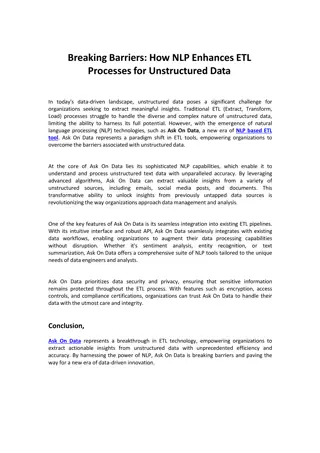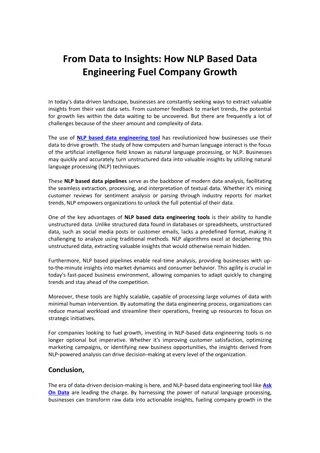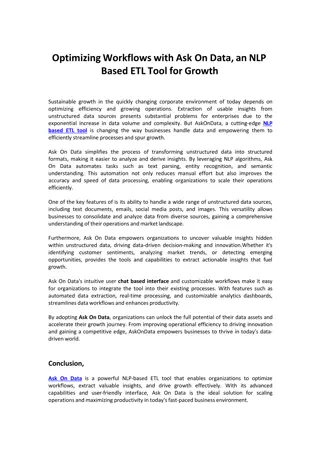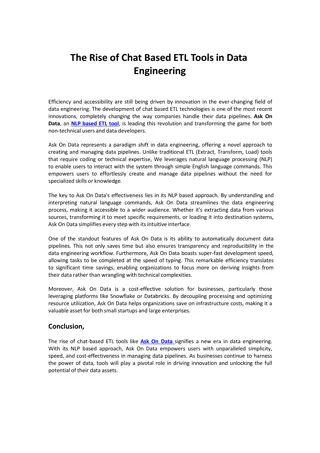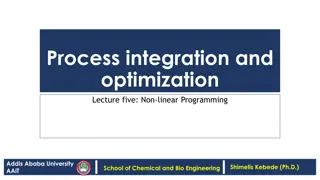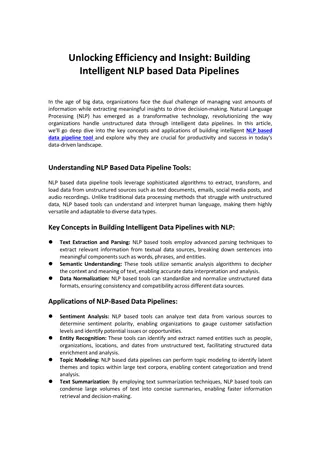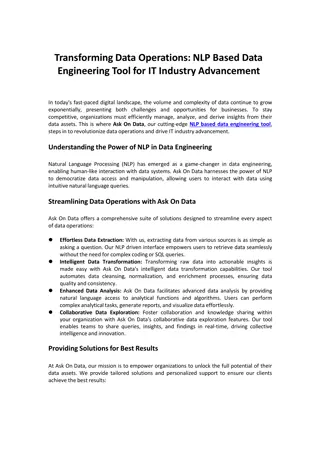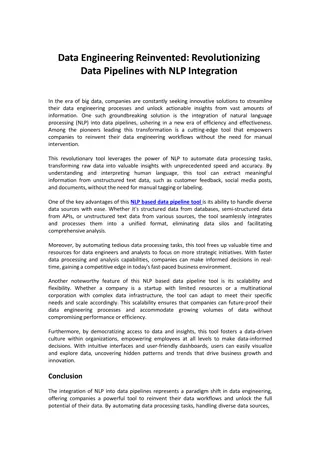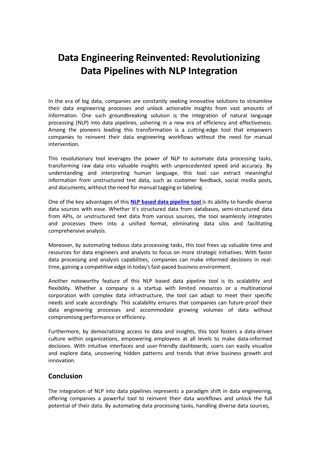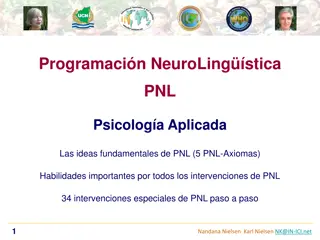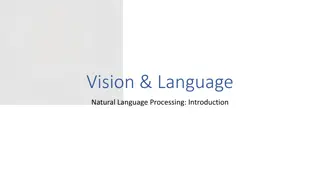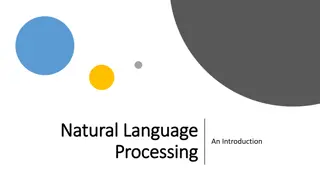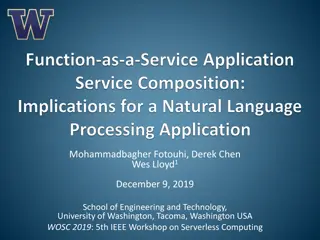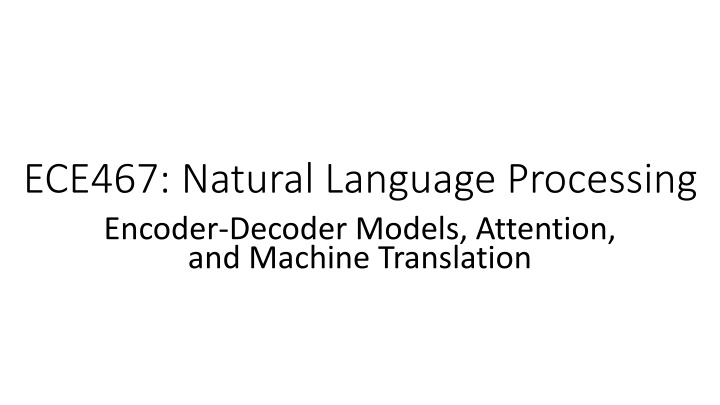
RNNs, Encoder-Decoder Models, and Machine Translation
Delve into the realm of Recurrent Neural Networks (RNNs) for sequence labeling and text categorization, explore the power of Encoder-Decoder models, attention mechanisms, and their role in machine translation. Unravel the complexities of mapping sequences to sequences, recall RNN equations, and grasp autoregressive generation with RNNs as language models. Dive deep into the world of Natural Language Processing with this comprehensive guide.
Download Presentation

Please find below an Image/Link to download the presentation.
The content on the website is provided AS IS for your information and personal use only. It may not be sold, licensed, or shared on other websites without obtaining consent from the author. If you encounter any issues during the download, it is possible that the publisher has removed the file from their server.
You are allowed to download the files provided on this website for personal or commercial use, subject to the condition that they are used lawfully. All files are the property of their respective owners.
The content on the website is provided AS IS for your information and personal use only. It may not be sold, licensed, or shared on other websites without obtaining consent from the author.
E N D
Presentation Transcript
ECE467: Natural Language Processing Encoder-Decoder Models, Attention, and Machine Translation
Review of RNNs In our last topic, we saw how recurrent neural networks (RNNs) could be applied to sequence labelling or text categorization For sequence labelling, every word or token gets a label; examples include POS tagging and named entity recognition (NER) For text categorization, a sequence of text receives one label; our textbook refers to this as sequence classification when RNNs are used In practice, variations or RNNs such as long short-term memory (LSTM) networks or gated recurrent unit (GRU) networks are used Such variations of RNNs help to mitigate (although not completely eliminate) the vanishing gradient problem Any of these variations can be bidirectional and/or stacked
Mapping Sequences to Sequences The first part of this topic is partly based on Section 9.7, titled "The Encoder- Decoder Model with RNNs" The middle part of this topic is partly based on Sections 13.1-13.3 and Section 13.5; Chapter 13 in general is titled "Machine Translation" The last part of this topic is partly based on Section 9.8, titled "Attention" Some of the content (including some figures) comes from an earlier draft of the book Many NLP tasks involve mapping a sequence of text to another sequence of text Examples include machine translation (MT), summarization, and (in some sense) question-answering (QA) We will cover encoder-decoder networks, also known as sequence-to-sequence (seq2seq) models, that are capable of this
Recall: RNN Equations The equations describing what happens at each time step in a simple RNN used for sequence labelling are: ht= g(Uht-1+ Wxt) yt= f(Vht) The function, g, is an activation function used at the hidden layer (e.g., tanh, sigmoid, or ReLU, although ReLU is not common in RNNs) Often, the output layer will be a softmax layer Generalizing for variations of RNNs (some of which use more complex structures within gated cells), we can instead write: ht= g(ht-1, xt) yt= f(ht) Technically speaking, for an LSTM, there should be two outputs and an extra input for each cell
Recall: Autoregressive Generation To apply an RNN to the task of autoregressive generation, we first train the RNN as a language model Language models, in general, can be evaluated by computing their predicted probabilities for actual text corpora When evaluating neural language models, we consider the probabilities assigned to each word in a test set In theory, we can multiply the probabilities, but in practice, we add log probabilities and sometimes express the result using perplexity When using an RNN trained as a language model for autoregressive generation: Instead of using the outputs from the softmax layer to evaluate the probability of a word in a test set, we use the probability distribution to sample words We start the sequence with a beginning-of-sentence marker (<s>) We keep generating words until an end-of-sentence marker (</s>) is generated, or until some fixed, maximum number of words have been generated The figure on the next slide helps to explain how RNNs can be applied to autoregressive generation (any variation of RNN could be used) Here, I am using a version of this figure from an earlier draft of the textbook, because it matches our next figure, which has been dropped from the current draft of the textbook
Autoregressive Generation with Prefix An earlier draft of the textbook asked us to consider a variation of the autoregressive generation task before discussing encoder-decoder models Instead of seeding the network with just a start-of-sentence marker, we allow it to be seeded with a more general prefix In other words, given a prefix (which can be supplied by a user), the task of the RNN is to predict the completion of a sentence starting with the prefix The figure on the next slide (from an earlier draft of the textbook) demonstrates how an RNN can be used for this purpose Note that the prefix is processed first, without leading to any outputs or predictions; this is just forward inference The final hidden state after processing the prefix is used as the starting point for the autoregressive generation
Machine Translation The textbook defines machine translation (MT) as "the use of computers to translate from one language to another" An earlier draft defined MT as "the task of automatically translating sentences from one language into another" Sometimes, MT by a computer is called automatic machine translation Of course, we are talking about natural languages here, not formal languages Even before the success of deep learning in NLP, most efforts in automatic MT involved statistical machine translation When neural networks are used for machine learning, this is often referred to in other sources as neural machine translation (NMT) Later in the topic, we'll take a brief excursion to talk about pre-neural MT (that content is partially based in the previous edition of the textbook)
Training Data for MT Statistical machine translation (neural or pre-neural) relies on a training set in the form of a parallel corpus A parallel corpus is also known as a multilingual corpus, parallel text, or a bitext Such a corpus contains text in (at least) two different languages Additionally, sentences have been aligned (either manually or in some automated fashion) The original language for an MT task is typically referred to as the source language The desired language (that the original text is translated to) is typically referred to as the target language To use a parallel corpus to train an NMT model, the source and target sentences are concatenated The book specifies that an end-of-sentence marker is appended to the end of the source sentence (in the current draft, they call it a sentence separation marker) Really, end-of-sentence markers are generally added to both sentences The target sentence end-of-sentence is never fed as input to the NMT model, but it is known to be the desired prediction after the last word
Using an RNN for MT An earlier draft of the textbook explained that machine translation with an RNN can be viewed as being similar to autoregressive generation with a prefix Instead of a prefix, the source sentence of a pair is fed to the RNN first Instead of generating a continuation of a prefix, the RNN predicts the target sentence The figure on the next slide (from an earlier draft of the textbook) demonstrates how a simple RNN can be used for MT; a similar figure appears in the current draft Really, the end-of-sentence marker (</s>) should be considered part of the source sentence, and would be processed by the encoder As with all RNN variations we have looked at, this network can be trained end-to-end using stochastic gradient descent (SGD) and backpropagation We will talk about training a more general encoder-decoder network for MT in more detail later After training, we can apply the network as follows: First, apply a source sentence into the network Second, use the final hidden state from the source sentence as the initial hidden state for the rest of the network, which predicts the target sentence
Simple Encoder-Decoder Model We can view the previous architecture as an encoder-decoder model The figure on the next slide (from an earlier draft of the textbook) generalizes the architecture from the previous slide; a similar figure appears in the current draft Note that this network is no longer specific to machine translation, but we can apply it to MT The encoder is the portion of the network that processes an input sequence (e.g., the source sentence for MT) The decoder is the portion of the network that generates an output sequence (e.g., the target sentence for MT) This simple encoder-decoder model has at least three flaws: The encoder and the decoder are assumed to have the same internal structure The final state of the encoder is the only context available to the decoder The final state of the encoder is only available to the decoder as its initial state
Generalized Encoder-Decoder Network The next slide (from the current draft of the textbook, but there was a very similar version in the earlier drafts) shows a further generalization of an encoder-decoder network Again, note that this network is not specific to machine translation The encoder "accepts an input sequence, x1 contextualized representations, h1 Encoders can use stacked Bi-LSTMs, GRUs, CNNs, or Transformers, but for the sake of discussion, we will focus on stacked Bi-LSTMs The hidden states from the both directions of the top Bi-LSTM are concatenated, or combined in some other way, to form a context vector The context vector, c, "is a function of h1 (if the encoder is stacked, these are the hidden states at the top layer) The decoder "accepts c as input and generates an arbitrary length sequence of hidden states h1 from which a corresponding sequence of output states, y1 We will discuss the decoder in more detail shortly This architecture eliminates all three of the flaws mentioned about the previous, simpler encoder-decoder architecture n, and generates a corresponding sequence of n" n, and conveys the essence of the input to the decoder" m, m, can be obtained"
Decoder Functionality The context vector, c, can be made available at each time step of the decoder We can therefore express as a general equation: ht The book refers to g as "a stand-in for some flavor of RNN" Also, yt 1is "the embedding for the output sampled from the softmax at the previous step" The book lists the equations for the output as zt= f ht where ztis the input to the output later Not mentioned in the textbook: The output at each time step of the decoder could be based solely on the current hidden state, which is what the above equations assume Alternatively, it could also be given access to the context vector and/or the previous output This leads to the more general equation yt= softmax( yt 1,zt,c) d d= g yt 1,ht 1 ,c dand yt= softmax(zt),
Excursion: Pre-neural MT The current draft of the textbook hardly discusses the rich history of machine translation Pre-neural MT is only briefly described in the "Bibliographical and Historical Notes" section at the end of Chapter 13 I think that to appreciate NMT, we need to be at least partially aware of what came before it I am partially basing this excursion on material from the previous edition of the textbook; after the excursion, we will return to the discuss of NMT The figure on the next slide (from the previous edition of the textbook) shows the translation of a passage from an 18th century Chinese novel The C1 through C4 lines show the direct translations of words (and phrases) from Chinese to English The E1 through E4 lines show the actual words (and phrases) and sentences produced by a human translator Note that in Chinese, this was a single sentence, but it led to four sentences in English Book (previous edition): "Translation of this sort requires a deep and rich understanding of the source language and the input text and a poetic and creative command of the target language"
Some Reasons that Automatic MT is Difficult A single word in the source language can have many possible translations in the target language, and sometimes the differences are subtle Different words in the source language can have the same translation in the target language Morphological rules differ between languages In general, good translations do not always involve one-to-one mappings of words; sometimes one-to-many, many-to-one, or many-to-many mappings are necessary The rules of grammar differ from one language to the next, and word order will likely need to change Some syntactic notions (e.g., forms of agreement, politeness levels, etc.) exist in some languages but not others Figures of speech differ from one language to another Pronoun resolution (and reference resolution in general), as well as other types of disambiguation, often comes into play; some languages leave out pronouns altogether Some languages may lack words or short phrases for certain concepts that exist as single words in other languages; this is called lexical gap Some languages have particular oddities (e.g., the existential "there" in English)
Pre-Statistical Machine Translation The figure on the next page (from the previous edition of the textbook) shows the Vauquois triangle, which helps explain the various pre-statistical approaches to MT A simpler version is shown in the "Bibliographical and Historical Notes" section at the end of Chapter 13 The approaches not only pre-dated NMT, but also predated conventional, statistical NLP approaches Direct translation approaches: These translate word-by-word, or possibly phrase-by-phrase Some simple word reordering might be possible in post-processing Transfer approaches: These approaches start by parsing the input text Then, they apply rules to transform the source-language parse to a target-language parse Then, they generate words in the target language Some transfer approaches would, in theory, apply some semantic parsing, but in practice this generally was not attempted Interlingua approaches: These analyze the input text to produce a meaning representation called an interlingua Then they then generate the target text from the interlingua This was considered an ideal; such approaches did not exist in practice However, some NLP practitioners consider modern encoder-decoder approaches to be interlingua approaches
Fluency vs. Faithfulness The previous edition of the textbook introduced statistical MT (which was pre- neural) with an example Suppose we were translating the Hebrew phrase "adonai roi" The textbook pointed out that this would typically be translated into English as "The Lord is my shepherd" They then pose the following question: What if we are translating this phrase into the language of a culture with no notion of sheep or shepherds? We could attempt to translate the phrase to something fluent, that captures the spirit of the meaning, such as "The Lord will look after me" Alternatively, we could try to be faithful to the explicit meaning This might produce something like "the Lord is for me like somebody who looks after animals with cotton-like hair"
Bayes Rule for Pre-neural Statistical MT We will see that many pre-neural, statistical MT systems attempted to balance fluency and faithfulness Assume we are translating a sentence, F, from a foreign language into English Many (but not all) pre-neural, statistical MT systems relied on Bayes' theorem to obtain: P F E P(E) P(F) E=argmax P E F = argmax = argmax P F E P(E) E E E We can ignore the term P(F) because it is a constant Three components are needed to translate a foreign sentence, F, to an English sentence, E, using such an approach: A translation model to compute P(F|E) A language model to compute P(E) A decoder which is given F and produces the most probable E (this is far from trivial, because we cannot feasibly loop through every possible sentence E) I consider this to be a very unintuitive use of Bayes theorem; I'll discuss why in a couple of slides
Pre-neural Statistical MT Translation Model The translation model component of a pre-neural, statistical MT system would typically rely on phrase-to-phrase probability estimates These estimates would be learned from a parallel corpus, the same sort of corpus used to train NMT systems However, while these datasets generally indicate sentence alignments, they typically do not indicate word or phrase alignments These would have to be estimated using other algorithms Ultimately, to estimate P(F | E) in the formula, a system would: Multiply the probabilities of each English word or phrase being translated to each foreign word or phrase Also account for distortion probabilities, which account for how far each phrase has moved in the translation This component helps to account for the faithfulness of the predicted translation We are not discussing the translation model in detail
Pre-neural Statistical MT Language Model As mentioned earlier, I consider the use of Bayes theorem for statistical MT to be very unintuitive There is no reason to think that estimating P(F | E), discussed on the last slide, is simpler or more accurate than estimate P(E | F) directly The reason that many pre-neural statistical MT systems used Bayes' law is specifically to introduce the language model for the target language The language model component of a pre-neural, statistical MT system would typically be the simplest part of such a system As we learned during the first unit of our course, conventional language models typically relied on N-grams Adding this component to the system helped to account for fluency of the predicted translation
Pre-neural Statistical MT Decoder Referring back to the use of Bayes theorem in many pre-neural, statistical MT systems, we saw the equation: E=argmax E E P(F) We already discussed the translation model and the language model; what remains is the decoder If we could loop through all possible English translations, in principle, we could estimate P(F | E) and P(E) for all of them, and then choose the argmax Clearly, this is not feasible One possible solution relies on A* search, which we cover in my AI class Another, probably more commonly solution relies on beam search Beam search is not guaranteed to find the optimal solution, but it can often find a good solution much more efficiently We will soon see that beam search is also used in many NMT systems We are not discussing decoders of pre-neural statistical MT systems in detail P F E P(E) P E F = argmax = argmax P F E P(E) E
Neural Machine Translation As mentioned earlier, when neural networks are used for MT, this is often referred to as neural machine translation (NMT) The figure on the next slide, repeated from earlier in the topic, shows a general encoder-decoder network (not specific to MT) Over the next few slides, we will discuss how such an architecture can be applied to MT
Encoder Applied to MT The encoder accepts an input sequence For a machine translation system, the input represents a sentence to be translated from a source language to a target language This input sequence may be a sequence of word embeddings Recall that the encoder can use any variation of RNN (e.g., an LSTM); it can be stacked, and each layer can be bidirectional The cells at the top layer produce visible hidden states, h1 Ultimately, the encoder produces a context vector, c, which is based on the sequence of hidden states produced by the encoder's top layer n
Decoder Applied to MT m The decoder accepts the context, c, and produces a sequence of hidden states, h1 Optionally, each current decoder cell may consider the entire context vector c, in addition to the previous hidden state and the previous output A general equation for the hidden state of the decoder produced at time step, t, can thus be expressed as: ht ,c For MT, the first parameter, yt 1, is the word embedding representing the word generated at the previous time step, yt-1 The second parameter is the previous hidden state produced by the decoder The output layer computes the outputs, y1 Optionally, c and the previous output can also be used by the output layer at each time step, in addition to a weighted version of the current hidden state For an MT system, assuming softmax is used at the output layer, the y values represent a probability distribution of possible words in the target language This leads to the general equation yt= softmax( yt 1, zt,c), where zt= f ht d d= g yt 1,ht 1 m, based the hidden states of the decoder d
Training an Encoder-Decoder for MT As previously mentioned, to train an NMT system, we use sentence-pairs from a parallel corpus, a.k.a. a parallel text or a bitext The source sentence, ending in an end-of-sentence marker is applied to the encoder When the decoder is applied, the error is based on the probability assigned to the true next word (if we are using the cross-entropy loss function) Regardless of what word the decoder predicts, the actual next word from the target sentence is fed to the decoder at the next time step for training The end-of-sentence marker is never fed to the decoder as input, but it is the expected token after the last word in the target sentence The entire encoder-decoder network can be trained end-to-end using stochastic gradient descent and backpropagation
Problem with Choosing Words As We Go We have been assuming that the decoder applies an argmax to the output of softmax to determine the most likely word at each time step This would be an example of greedy decoding This is not optimal to produce the best overall sentence Book: "The problem is that the token that looks good to the decoder now might turn out later to have been the wrong choice" For sequence labelling tasks, we can use algorithms such as the Viterbi algorithm to optimize tags for the entire sentence The current draft of the book explains that this doesn't work for generation tasks involving long-distance dependencies Related to this, I would add that the Markov assumption doesn't hold
Beam Search One common method to improve translations (or other encoder-decoder tasks) is to use beam search We also mentioned beam search as a technique used by decoders for pre-neural statistical MT My slides on beam search for NMT are partially based on an earlier draft of the textbook; the current draft covers beam search in Section 10.4 (Chapter 10, in general, relates to Transformers) Beam search views the task of the decoder as a search through the state space of possible output sequences (translations, in the case of MT), but we must avoid an exponential search At the first step of decoding, beam search keeps track of the B best choices; B is the beam size For MT, after the first step, it keeps track of the B most likely first words of the predicted translation Using general search terminology, the B states currently comprising the beam represent the frontier of the search; the partial paths leading to these B states can be called hypotheses Each of the B hypotheses leading to states on the frontier is fed to a distinct decoder; that is, for each of the B hypotheses, we are keeping track of separate updated states of the entire neural network Looking at the outputs of all B softmax functions, we choose the B best updated hypotheses to store for the next time step (along with their updated full neural networks) For MT, after T time steps, the current hypotheses represent the B best output sequences so far, representing predictions for the first T words of the translated sentence
Terminating Beam Search When an end-of-sentence marker is generated, the hypothesis leading to it is recorded, and the size of the beam is reduced by one The process continues until the beam size is 0 At that point, we have remembered B complete hypotheses, each representing a fully translated sentence Based on their overall probabilities (determined by the softmax functions that predicted the target words), we can choose the best sentence The figure on the next slide (from an earlier draft of the textbook) helps to explain how beam search works One issue with beam search is that longer sequences tend to have lower probabilities associated with them than shorter sequences This is because more probabilities have been multiplied together This can be mitigated with some sort of length normalization
The Context Vector Revisited n"; we So far, we haven t said much about the context vector, c, except that it "is a function of h1 can write this generally as c=f(h1 However, the number of hidden states produced by the encoder varies according to the length of the input sequence We need a fixed-sized context vector, so we can't juts concatenate all of them One approach is to use only the final hidden state as the context vector However, this leads to context that dominated by the latter part of the input For bidirectional RNN variations, another approach is to concatenate the final hidden states from each direction However, this leads to context that is dominated by the start and end of the input Another possibility is to sum or average all the hidden states produced by the encoder However, it is not generally the case that all hidden states are equally important It is also possible that the relative importance of specific encoder hidden states will change as the decoder is producing different parts of the output n)
Attention Instead, we can apply an attention mechanism; such a technique is often simply referred to as attention Added to encoder-decoder models, attention has led to improved performance for several NLP tasks, including machine translation Instead of having a static context vector, a different context vector is generated at each time step of the decoder Therefore, instead of writing hi can write hi In the new equation, ciis the updated context vector at step i of the decoder Of course, we need to discuss how to compute ci d= g yi 1,hi 1 d,c , as we did earlier, we d= g yi 1,hi 1 d,ci
Attention: Computing Scores Book: "The first step in computing ciis to compute how much to focus on each encoder state, how relevant each encoder state is to the decoder state captured in hi 1 One simple method for computing scores is to use a dot product, in which case the method is called dot-product attention: score hi 1 This method has been used for some implementations of attention, and it can lead to very good results for some tasks Using the dot product, we are paying the most attention to hidden states from the encoder that are most similar to the previous hidden state from the decoder Another method for computing similarity scores allows the network to learn how to compare encoder hidden states to decoder hidden states One way to do this is: score hi 1 The weights are regular neural network weights, learned with all other weights during end-to-end training of the neural network d" d,hj e= hi 1 d e hj d,hj e= hi 1 dWshj e
Attention: Computing the Context Vector However the similarity scores are computed, a softmax function is used to normalize them: ij= softmax score hi 1 I add: When learning weights for to obtain scores, a tanh function is often applied in practice before applying the softmax function The ijvalues represent "the proportional relevance of each encoder hidden state j to the prior hidden decoder state, hi 1 Using these values, we can compute the current context vector as: ci= j ijhj The figure on the next slide helps to explain the attention mechanism The figure assumes dot-product attention is being used d,hj e j e d" e
Evaluating MT systems One way to evaluate MT systems is to rely on human judgements, but that is expensive and not always feasible Another way is to use a metric The metric that has dominated the automatic MT literature is called BLEU, which stands for Bilingual Evaluation Understudy BLEU compares an automatically generated translation to one or more human translations of the same source sentence to the same target language BLUE measures the frequencies of all N-grams, up to some specified N, that overlap with at least one of the human sentences These measures are combined, and there is also a penalty for brevity, without which the metric would favor short translations When BLEU was first created, it seemed to correlate very well with human judgements of quality However, after researchers started to optimize their systems specifically to maximize BLEU scores, that correlation often fails to hold Nonetheless, BLEU has been the dominant metric to evaluate MT systems The textbook also explains a similar, newer metric called chrF


